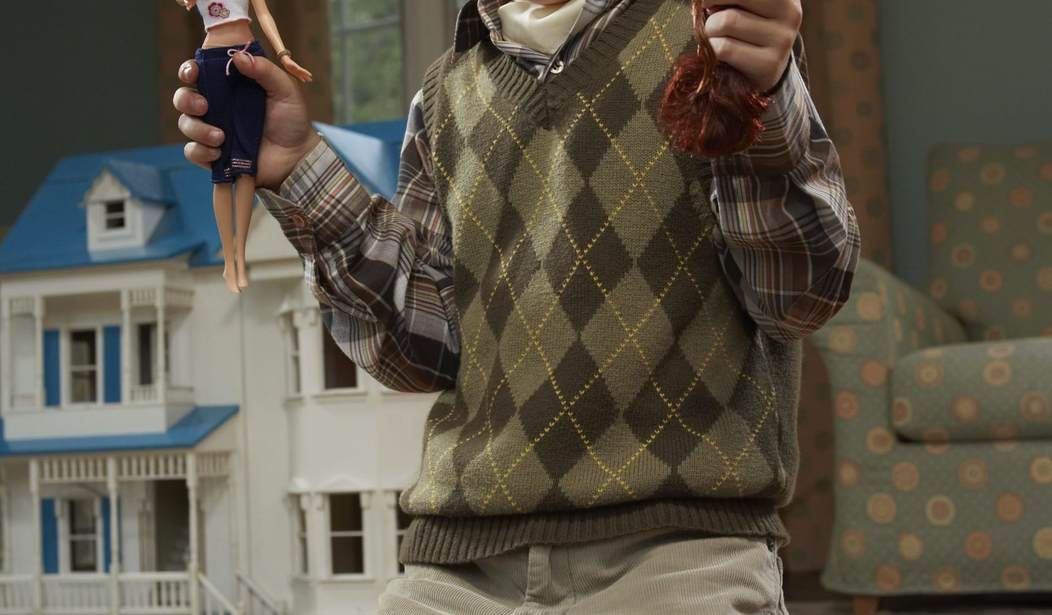Iceland’s Hjalli schools aim to eliminate “stereotypical gender roles and behaviors.” The model, founded in 1989 by self-described radical feminist Margrét Pála Ólafsdóttir, is thriving. It centers around “gender compensation work” in which boys and girls are separated and forced to perform tasks traditionally associated with the opposite gender. NBC News reports that nine-year-old boys in one Hjalli school, for example, “styled each other’s hair, painted on nail polish or gave each other full-body massages” as part of this curriculum. “The best way to get closer to equality,” Ólafsdóttir says, confusingly, “is to admit the differences.”
Schools that focus on breaking “gender norms” exist around the world. Sweden’s state curriculum, for example, seeks to break children free of “stereotyped gender roles.” But these schools and curricula come out of the feminist assumption that gender itself is a social construct — that without society’s insistence on “gender norms” men and women would be exactly the same. But Hjalli schools, it seems, are different. Ólafsdóttir’s premise is not that there is no such thing as gender. She recognizes that girls possess “sensitivity and caring natures” while boys exhibit “strength and power,” she just seems to think they shouldn’t.
Ólafsdóttir’s actual beliefs about boys and girls are surprisingly accurate, for a “radical feminist” with an insane teaching philosophy. NBC News reports that Ólafsdóttir believes that “girls are more socially capable, have a stronger ‘we’ identity and seemingly have a natural desire to be caring and helpful. Boys, on the other hand, are more individual, have a stronger ‘I’ identity, show more initiative and are naturally drawn to games and things more than people.” But she feels that these natural traits can morph into what she calls the “blue and pink haze.” Girls can turn to “self-pity and victimhood,” while boys turn to “aggression or even violence.” It’s what Ólafsdóttir does with this information that makes no earthly sense.
Rather than creating a school in which children are taught to channel their innate desires and instincts into productive, positive, and mutually beneficial endeavors — which would be healthy and useful — the Hjalli method seeks to eliminate those innate desires and instincts altogether. Logically, this is a head-scratcher, and practically, it’s akin to child abuse.
Schools that operate under the premise that there’s no such thing as gender can arguably be forgiven for trying to teach children to break free from gender stereotypes. This type of school is still potentially harmful to children, and certainly operates under a mistaken assumption, but it at least makes logical sense within the incorrect framework in which it operates. The same cannot be said for Ólafsdóttir’s schools. If there is such a thing as gender, and gendered behavior isn’t inherently bad or wrong, then forcing children to act against their gender isn’t in their best interest.
There is a huge difference between telling a little boy that he may not use his strength and aggressive instincts to harm other children, and telling him that he must relinquish those instincts altogether. A school that seeks to help children avoid the “blue and pink haze,” but recognizes that gender itself isn’t evil, might offer aggressive boys the opportunity to practice a martial art, or put overly sensitive girls in charge of organizing an important activity for the group. Instead, Hjalli schools make playing with dolls a boys-only activity, and tell little girls (but not little boys) that it’s not okay to cry.
If gender is not a social construct — which Ólafsdóttir seems to admit — then children must be allowed to express themselves in gendered ways. Gender is neither positive nor negative in and of itself. It simply is. But, because it is, it must be acknowledged. The fact that gendered behavior could become negative is no cause to eliminate it altogether. Anything could become negative if used poorly. Forcing children to behave as if they were members of the opposite gender will not teach them how to channel their innate instincts in positive ways. It will simply confuse them, and make them think those innate instincts are wrong. This is not equality. It’s child abuse.









Join the conversation as a VIP Member